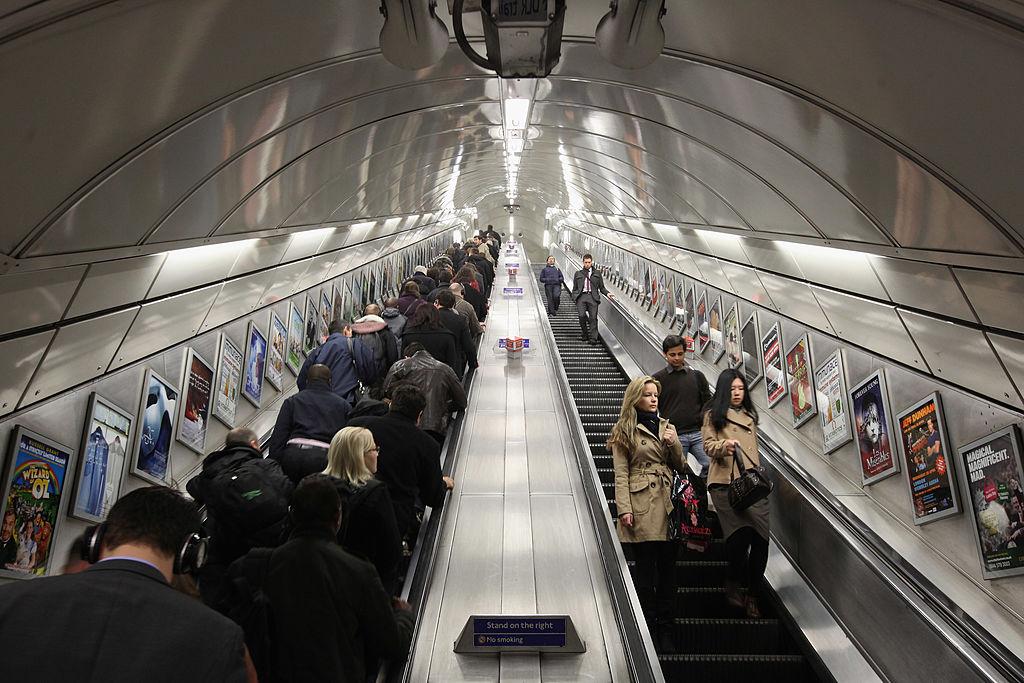Your support helps us to tell the story
This election is still a dead heat, according to most polls. In a fight with such wafer-thin margins, we need reporters on the ground talking to the people Trump and Harris are courting. Your support allows us to keep sending journalists to the story.
The Independent is trusted by 27 million Americans from across the entire political spectrum every month. Unlike many other quality news outlets, we choose not to lock you out of our reporting and analysis with paywalls. But quality journalism must still be paid for.
Help us keep bring these critical stories to light. Your support makes all the difference.
In 2016, Transport for London, or TfL, ran a trial at Holborn Tube station to answer this question: Is it better to stand or walk on the escalator?
Surprisingly, in some cases, it is better and more efficient to stand rather than walk on the escalator, according to the results of a study obtained through a Freedom of Information request from Gizmodo's James O'Malley.
Stand on the right — and the left?
On the London Underground, the escalator etiquette is very clear. Stand on the right, and walk on the left.
This means people who are prepared to walk can move through stations faster — but it also means that during busy periods, there are often queues to get onto the right side of the elevator to stand, while the left side is under-utilised. It's arguably inefficient, in other words.
TfL wanted to test whether it would be more efficient if people were told to stand on both sides of the escalator. Would the majority of people get through the station faster as a result? In a six-month trial, it instructed commuters to do exactly that: stand.
(Of course, in an ideal world, the most efficient would be for people to walk on both sides all the time. But that's not going to happen. Some people have access needs, meaning they can't necessarily walk up escalators. And many people simply choose to stand.)
The results: Standing is superior (when it's busy)
According to Gizmodo, the results showed that when the station was busy, more commuters were able to travel up the escalator (measured as "throughput") in a given timeframe when everyone stood. Standing-only escalators had a "throughput" of up to 151 passengers per minute, while an escalator where commuters were still allowed to walk saw around 115.
"Greater throughputs are seen on escalators 6 and 7 [the two escalators where the standing-only rule was tested] when there is a low proportion of passengers walking up the escalators," the report said. "This indicates that during very busy periods a greater throughput can be achieved when passengers stand on both sides of the escalator."
(In fact, when it's quiet, standing on both sides could presumably even decrease efficiency, as no-one is queuing but fast-moving walkers are still being blocked.)When stations are less busy, it doesn't make much difference, however: "The results show that for throughputs of up to 100 passengers/minute, the correlation between the proportion of passengers walking up the escalator and throughput is not significant."

What's more important — efficiency, or not inconveniencing people willing to walk?
It's an interesting result — and one that seems sure to prove controversial. The Holborn trial caused confusion at times, with some commuters totally ignoring it, and it irked many commuters who felt they were being slowed unnecessarily.
The experiment raises questions about TfL's duties to commuters — should it maximise efficiency, even if doing so inconveniences a minority who are prepared to walk? Or should it sacrifice these efficiency gains and focus on encouraging more people to walk? It's a divisive subject.
At this point, it's not clear whether TfL has any plans to introduce the rule permanently at any of its stations, and the TfL press office did not immediately respond to a request for comment.
• A woman who has reviewed over 40,000 CVs outlines the 8 most annoying mistakes she sees
• The US is considering a direct strike against North Korea — here’s how it would go down
• This is what it looks like as a woman's organs shift inside her during pregnancy
Read the original article on Business Insider UK. © 2016. Follow Business Insider UK on Twitter.
Subscribe to Independent Premium to bookmark this article
Want to bookmark your favourite articles and stories to read or reference later? Start your Independent Premium subscription today.

Join our commenting forum
Join thought-provoking conversations, follow other Independent readers and see their replies
Comments